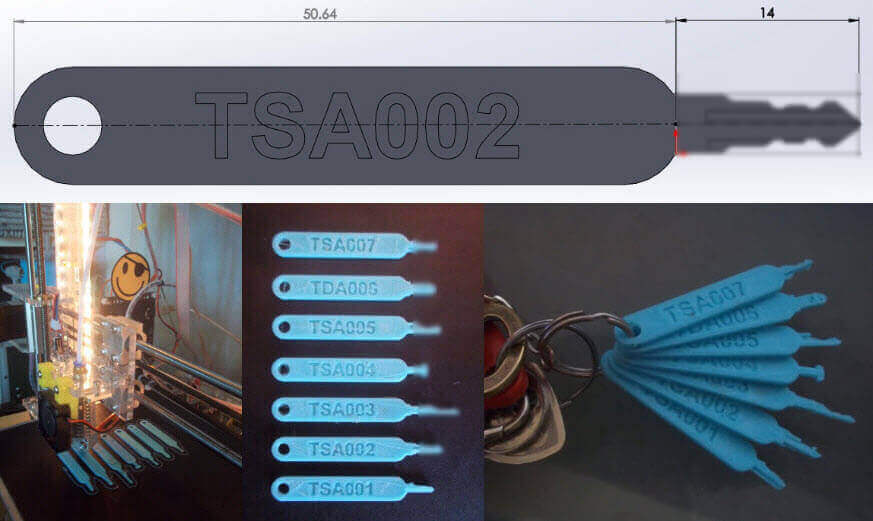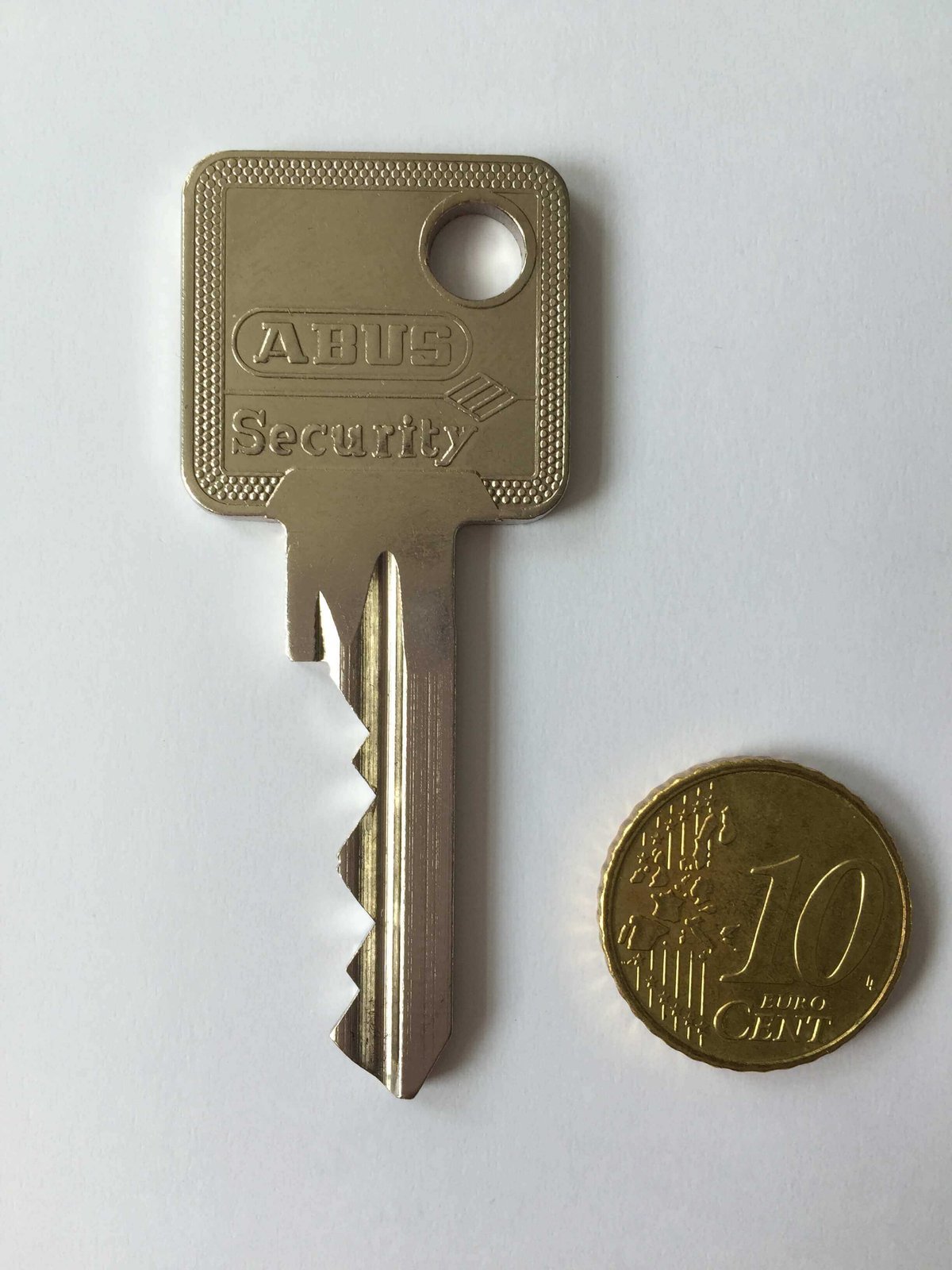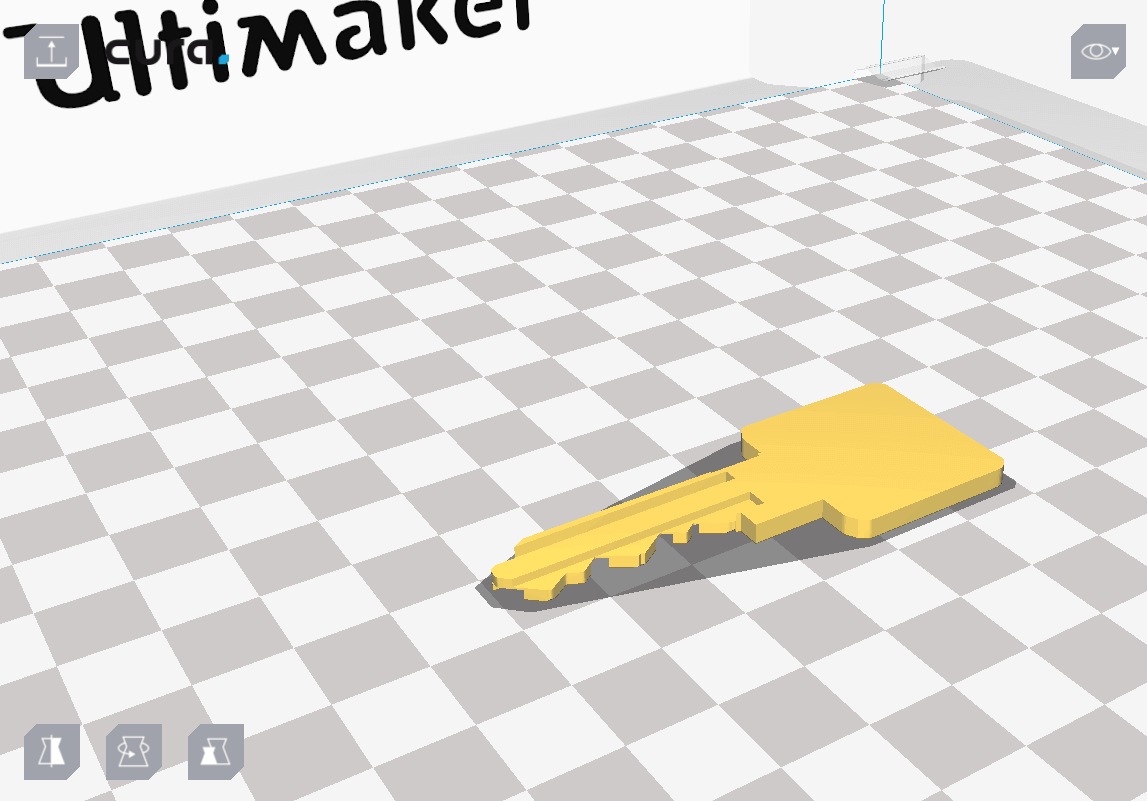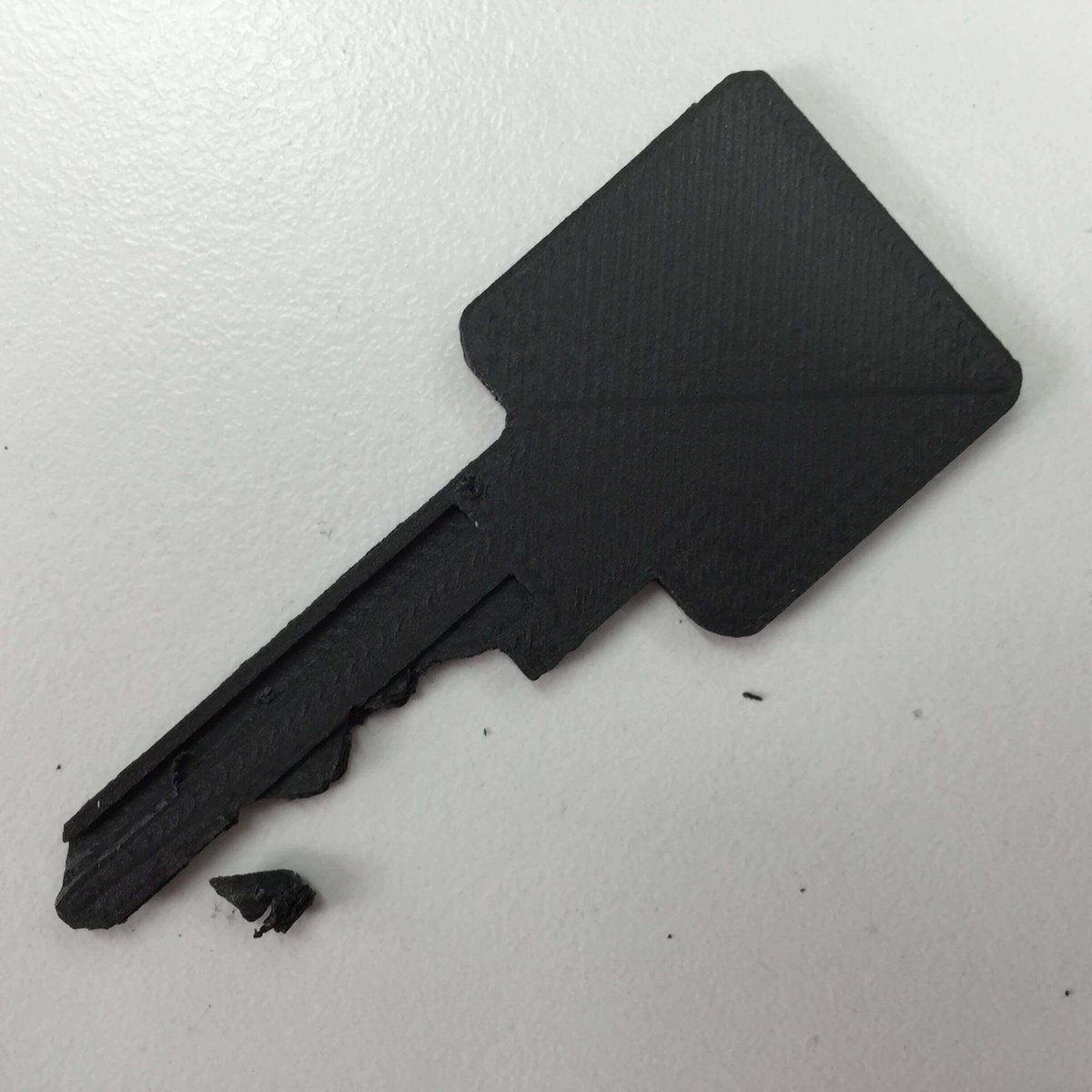With TSA master keys in the wild, the security of your luggage is at risk. But can you make a 3D printed key from a photo? All3DP finds out.
Back in November 2014, the Washington Post published a piece explaining what happens to your luggage when it is checked by Transportation Security Administration (TSA) agents.
In this article, they accidentally posted a picture of the master keys used by TSA staff, which they use to open and inspect luggage passing through baggage control. The newspaper realized their mistake and quickly removed the images. But it was too late, as other publications republished the story with unaltered pictures of the keys.

Why was this dangerous? Because these high-quality photographs of the TSA master keys were enough to reconstruct 3D models of the keys. It took only weeks until 3D printable files of the TSA master keys were uploaded to GitHub. As of 9/14/2015, the files are still available publicly – even as two versions.
This is a huge security problem, especially at airports and train stations. Before this incident, only TSA personnel and lock manufacturers had access to this collection of master keys. But now anyone can theoretically 3D print keys and rummage through your luggage without you knowing it.
How Easy Is It to 3D Print Keys?
ALL3DP decided to investigate and learn how easy it is to open a lock with a 3D printed key. So we obtained the TSA master key 3D models and printed off a set, and tested them on our own luggage with TSA locks.
The print was made on an Ultimaker 2 with PLA plastic filament, on the highest quality settings and 100 percent infill. It was finished in just 10 minutes.
After checking the corresponding number on the key to the lock, inserting the master keys in the lock was possible, although we had to fumble a bit.
But when we turned the key, the material bent and was close to breaking. Our conclusion is that PLA is not resilient enough as a base material for the keys.
But as you can see in the video below, some makers were more successful, and able to make working copies of the keys. This is one of the master keys 3D printed with a standard printer and regular filament:
https://twitter.com/bernard/status/641662069427847168/video/1
Worryingly enough, more than a week has gone by and the TSA hasn’t issued a statement on this security fiasco. Even if the files are removed from Github, they are now out in the wild.
Theoretically, every bag and every lock which is approved by the TSA for travelling is now insecure. Looking ahead, it will cost million of dollars to install a secure system again, and we’ll all have to buy new locks and luggage.
Let‘s put it another way — right now, the security of your luggage is less than zero. But can this also happen to your house door keys?
Will This Happen to Your Door Keys Too?
Since the first stories broke about 3D printed keys modeled from photos, All3DP has attempted to reproduce a door key on our office 3D printer.

We bought a regular German security lock from manufacturer Abus (Model C 83), which is certified in Europe as standard a standard security lock (EN1303:2005-04).
This particular lock has a security level of 5, which is considered as appropriate for areas of medium to low theft risk, so nothing too fancy. These locks are also recommended as secondary locking options in areas of high-theft risk when used with a higher rated lock for added security.
First, we made four photos with a regular smartphone camera. We shot front, back and several details of the key.
Then we handed the photos over to an experienced 3D designer, who started building a 3D model of the key.

It took several iterations before we developed a printable model that worked.
The first file was no good — the tip was simply too broad and not pointy enough to be inserted in the lock. The second version turned out to be better. We were able to put the key in the lock, but couldn’t turn the key.
After some modifications, the third key blueprint was ready to go.
3D Printed Keys: Do They Work?
When we printed with green ERP PET from Innofil3D (which is currently our standard filament and gives great results), the teeth of the key turned out to be a real problem.

The print was simply not detailed enough. When we inserted the key, the lock abraded the teeth.
Next, we we switched to a sturdier and tougher material (Biofila Silk). The print turned out just fine.

But still there was no way of inserting and turning the key without breaking it.

Our last try was with the strongest available material for home printing, ColorFabb XT-CF20. It holds 20 percent of carbon fiber, is good in dimensional accuracy, and twice as stable as PLA.

Again, this was a failure, as you can see above. Which brings us to our conclusion.
Are our Doors Safe?
First things, first. Yes, it is entirely possible to reproduce a key from a photo. This has been done before. Folks with CAD expertise can produce a convincing result (after some trial and error).
If you don’t have the 3D modeling skills, you also can resort to 3D scanning to get a good digital copy of the physical original.
But would a burglars be able to 3D print your door keys anytime soon? We doubt that strongly. Consumer grade 3D printing isn’t suitable for the task, in terms of the detail of the teeth and the strength of the material. And even if the design of the key is perfect, the strongest filaments available are not strong enough… yet.
But that’s not to say there aren’t other options. Key cutting with a CNC mill comes to mind, and has been used on several occasions.
Another way obtain a proper key is to order it through a 3D printing service provider. Printing it in steel means making a perfect copy. This brings up several interesting legal questions, chiefly whether 3D printing services are liable for the products they ship.
Finally, there’s the technique of lost-wax casting. In theory, a copy of the key could be printed in a waxy material and developed into a heat-proof mold for casting metal. But that requires access to a specialised workshop that’s beyond the scope of a consumer 3D printer.
So here’s some clarity on the sensational headlines you may have read in the mass media. The higher the security grade of the key, the more unlikely the possibility that you can 3D print it at home with an FDM printer. But there is potential for other forms of security mischief, and you’d be wise not to ignore them.
Your chief precautionary measure is to not allow your keys — whether it’s for the house, office, car or luggage — to be photographed or scanned.
We’d like to know what you’re thinking. Please feel free to add to the comments.
License: The text of "The TSA Got Hacked. But What About Your Door Keys?" by All3DP is licensed under a Creative Commons Attribution 4.0 International License.
